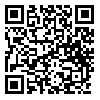Volume 18, Issue 5 (12-2014)
2014, 18(5): 392-402 |
Back to browse issues page
Abstract: (34 Views)
Introduction: University students, as the future manpower resources, are of high importance for communities. One of the aspects to focus on is their mental health. The present study was conducted to determine the relationship between alexithymia, irrational beliefs, positive and negative emotions with mental disorders in students. Methods: There were 400 students, selected randomly through stratified sampling from different disciplines at Razi University (Kermanshah, Iran). The design of the study was descriptive-correlational. The questionnaires used for collecting data were: Mental Disorders Symptoms (SCL_90), Alexithymia (FTAS-20), Jones Irrational Beliefs tests, and Positive and Negative Syndrome Scale (PANAS-X). Collected data were analyzed using statistical indices including correlation, regression and fundamental correlation. Results: Data analysis indicated that there was a significant relationship between alexithymia, irrational beliefs and negative emotions with mental disorders. There was a negative significant relationship between positive emotions and mental disorders. Alexithymia, irrational beliefs and negative emotions were capable of predicting mental disorders while positive emotions did not have this capacity. Although about 73% of mental disorders were predicted by irrational beliefs, alexithymia, negative and positive emotions, but negative emotions and alexithymia contributed more than other variables. Conclusion: Alexithymia and irrational beliefs play major roles in mental disorders. These variables explain a high variability rate of mental disorders. They are the predisposing factors for mental disorders. They need more attention in clinical studies.
| Rights and permissions | |
 |
This work is licensed under a Creative Commons Attribution-NonCommercial 4.0 International License. |


